In Search of Castles and Cuckoo Clocks in Bavaria
Explore Munich's rich history, from its dark past to medieval wonders, alongside modern vibrancy, while discovering Bavaria's stunning landscapes.
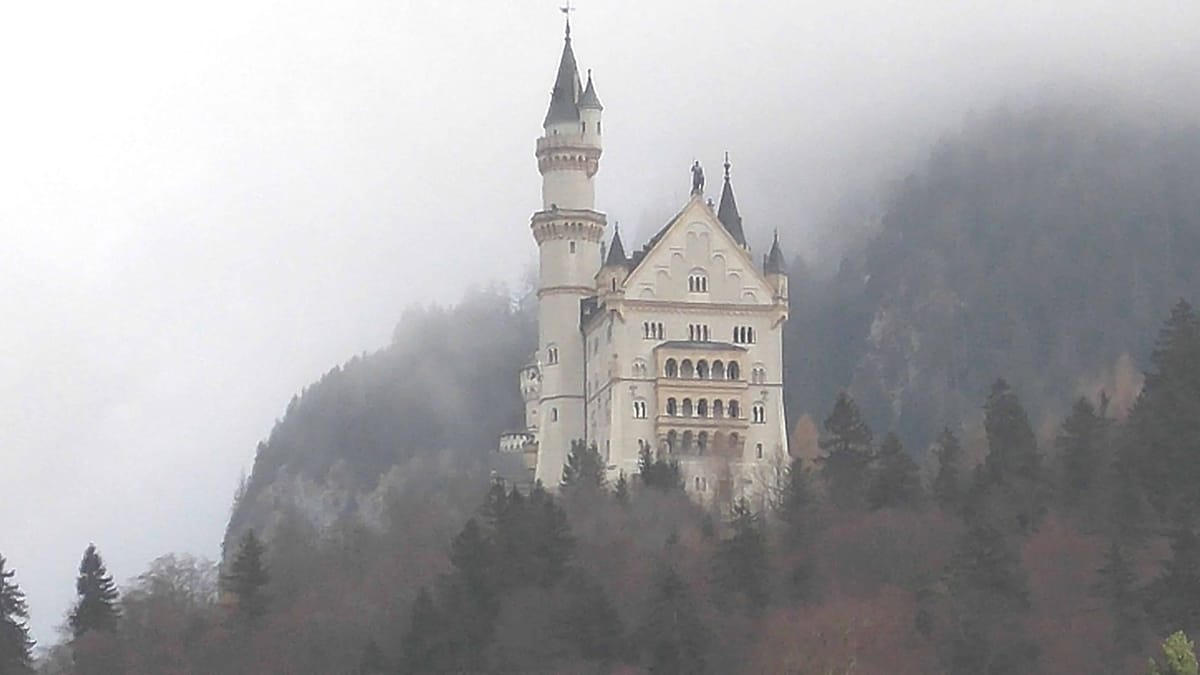
For many Americans who share ancestral heritage with Germany, there is a fascination with Bavaria. Smiling men in lederhosen and beer gardens with busty young women beckon many to travel to a land that seems like a never-ending beer game. Pictures of snow-topped mountains and castles that recall Disney fairy tales lead tourists to think of this mountainous area as a crystal fantasy.
Dark History of Munich
On a wintery visit to Munich, however, the fantasy seemed just a little different. The city looked grey, cold and very no-nonsense. Stepping out of the main train station, there was little romance. Trams rumbled up and down the streets with building construction everywhere, and people hurried by without a smile. There seemed to be little color, joy or whimsy.
As I looked at the variety of tours available, I realized why. This is a city that deals with a dark past, with walking tours of “Hitler’s Third Reich” and trips to nearby Jewish death camps. Even a tour to the nearby site of the 1972 Summer Olympics was overshadowed by the dark story of the murder of eleven Israeli athletes and coaches. Massacred by Palestinian terrorists after an 18 hour stand-off, this event opened the eyes of the world to terrorism, leading to increased security for global events.
Despite this dark history and somewhat depressing introduction to the city itself, it is clear that Munich has much to offer the world traveler. Munich is home to many international companies, with large universities, and a global identification as an “alpha city”. This city is a clearly a place to get business done. It is a city that is serious about growth, revision and improvement. However, this aggressive activity is done against a background of medieval towers and a respectful nod to the past.
Medieval History of Clocks and Beer
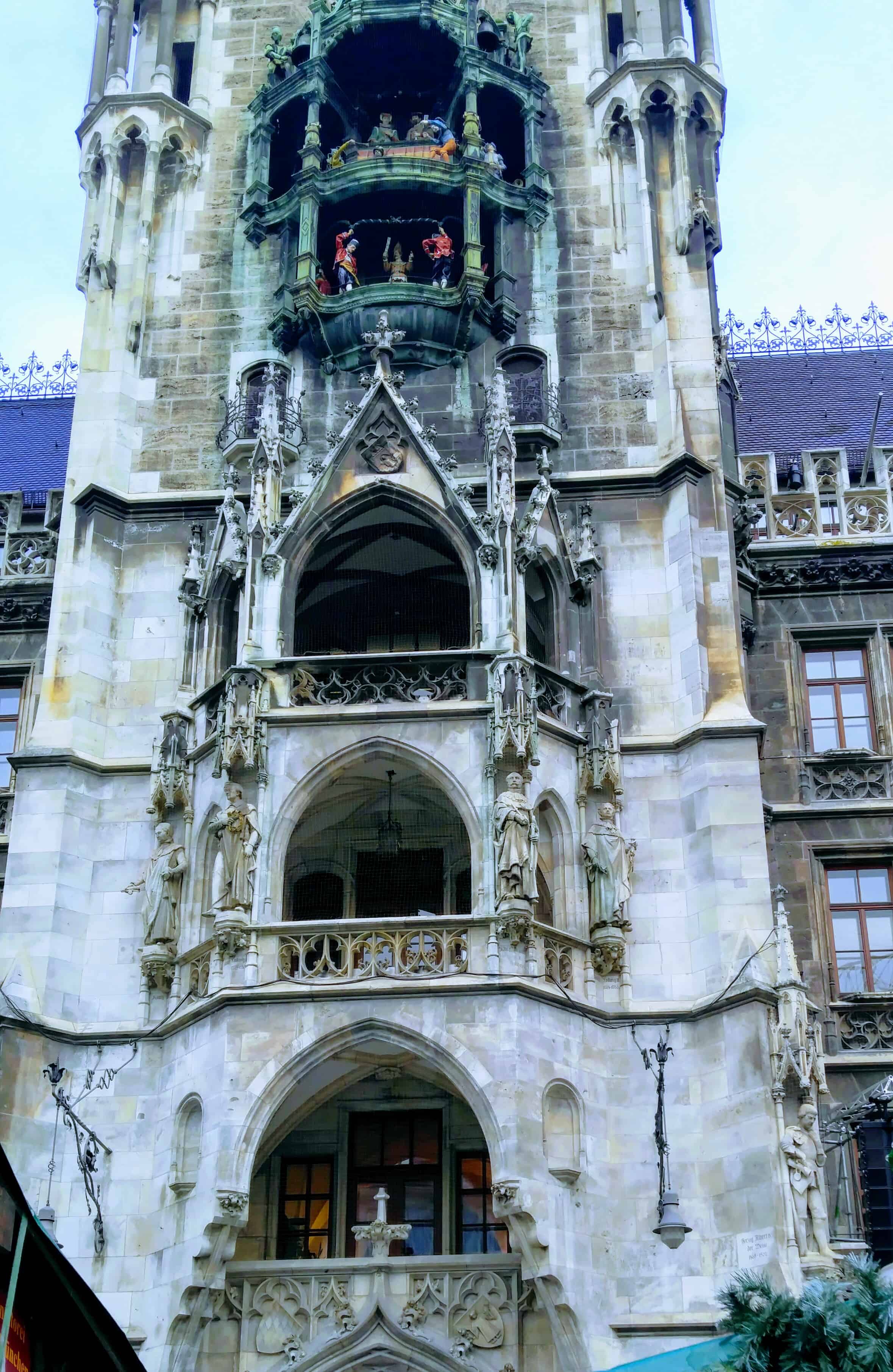
Marienplatz, which has been the center square of the city since 1158, once was the site of markets and tournaments in the Middle Ages. It is now home to the Glockenspiel, a huge clock in the Old City Hall which chimes using 43 bells, and brings laughter to the watching crowds as life-sized wooden figures “act” out ancient stories. The show comes out only twice per day, so be sure to plan your day to catch it, perhaps from a café on the square that serves a warm cappuccino.
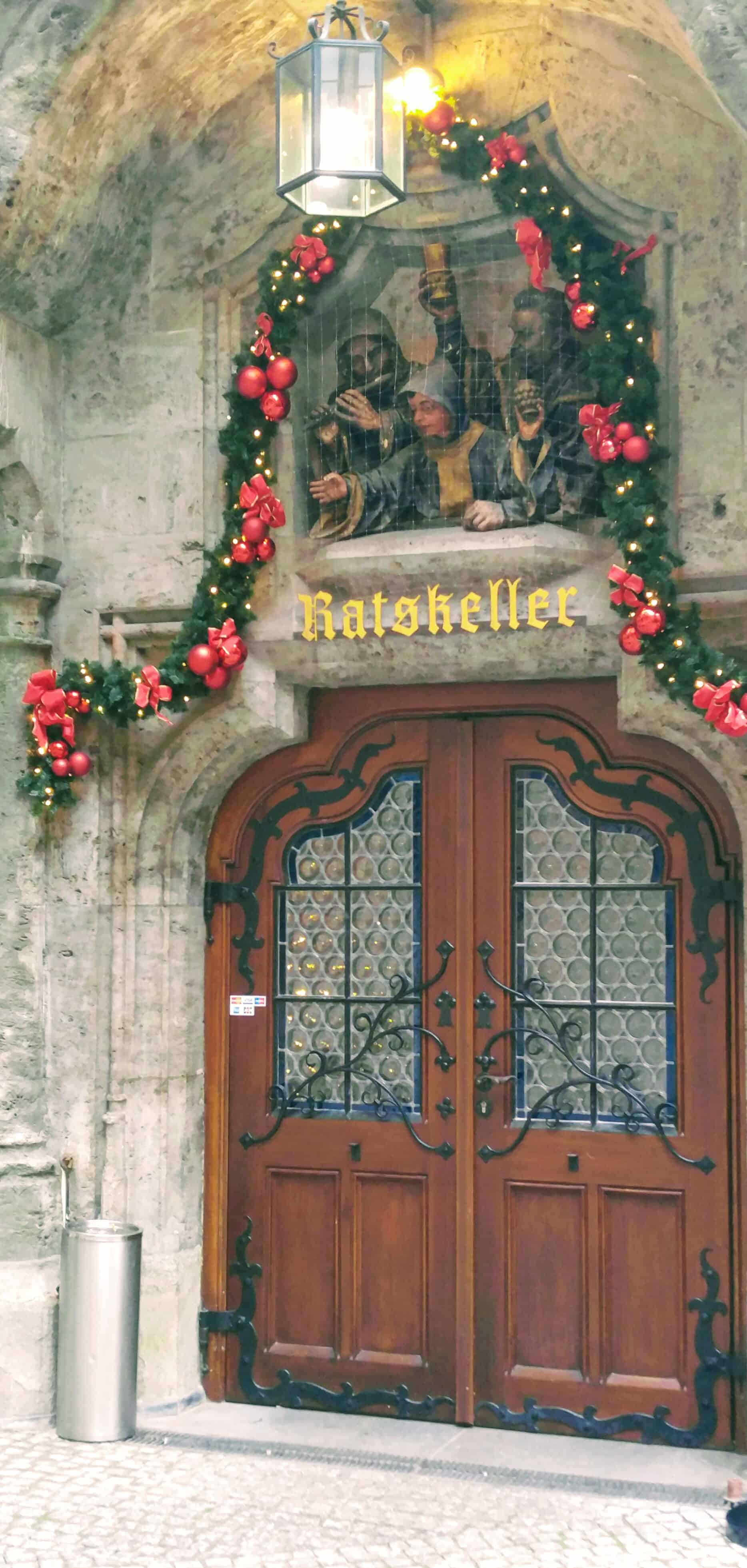
At the east side Munich’s Old City Hall sits a fully restored gothic council hall, tower and beer hall. Slip in to have a drink, escape the crowds, and gaze at the ceiling which celebrates the joy of drinking beer. The best news of all, you will find a very modern public restroom tucked into the bottom of the tower!
The famous pedestrian zone between the Karlsplatz and Marienplatz squares, often crowded, contains numerous shops and restaurants. To my pleasure I found wooden benches around the ancient trees in the center of the walk, so I could sit and people watch. In this ancient section of the city, people stroll rather than rush, and music sounds on every corner.
Exploring Munich
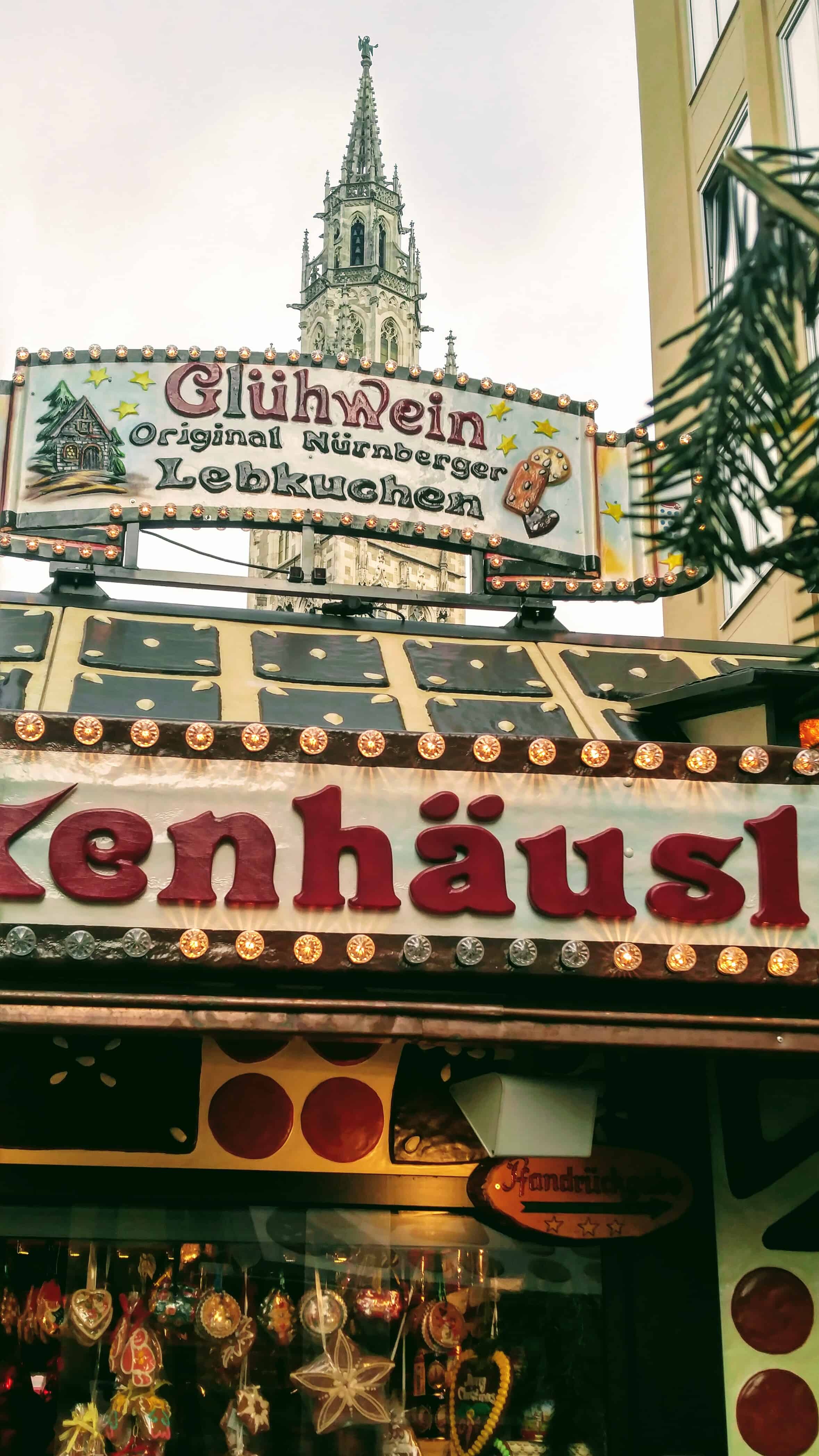
Three weeks before Christmas the Christkindlmarkt opens at Marienplatz, selling Christmas goods and food and drink. My favorite area of the market was the candy stalls, selling chocolate covered fruit on a stick.
There is a “hop-on, hop-off” bus which will take you to a variety of parks, museums, and palaces around the city. It surprised me to hear the tour guide point out a somber brick building which he identified as Hitler’s headquarters for the Third Reich.
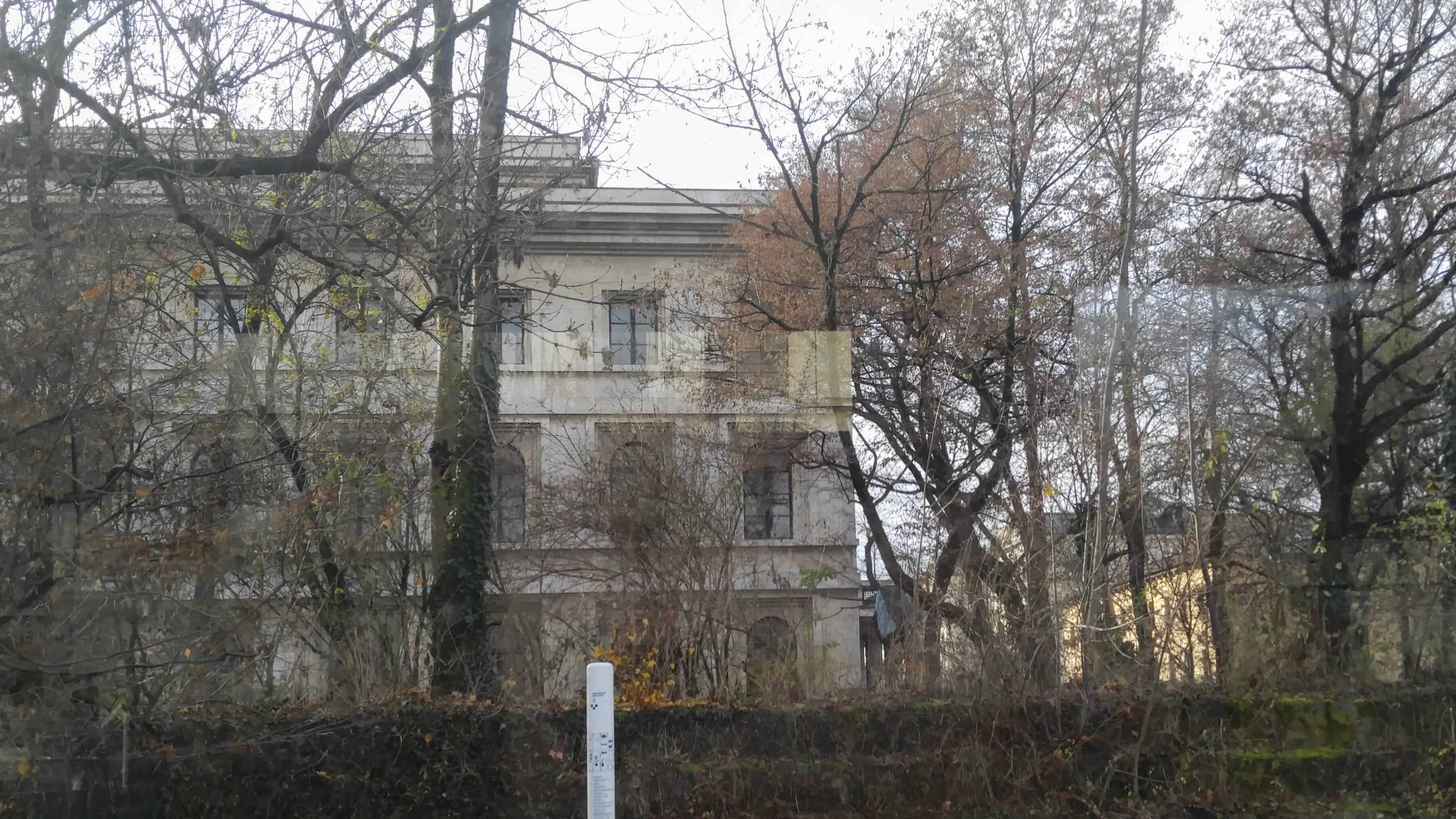
I won’t identify the tone of his voice as pride, but it was clear that he enjoyed the notoriety that this brought to the city. The building is now a museum focusing on the history of Munich and the rest of Bavaria during World War I, and World War II, especially of the history and the consequences of the Nazi regime.
Rural Bavaria
Munich is a convenient beginning for a day tour to the rural area of Bavaria, including the famed Neuschwanstein Castle. This is a nineteenth-century palace on a rugged hill above the village of Hohenschwangau near the small town of Fussen. The palace, commissioned by Ludwig II of Bavaria as his personal retreat, remains as an expression of his unique creative musings based on ancient tales of glory on the battlefield and mythical creatures.
The castle has become a symbol of this area, and is generally referred to as the “Sleeping Beauty Castle” since it served as an inspiration to Walt Disney. The castle was still incomplete when Ludwig II died suddenly, and under suspicious circumstances, in 1886. Although the king never intended to make the palace accessible to the public, it opened to the paying public within six weeks of his death in order to recoup the large outstanding construction debt. Today more than 1.3 million people visit annually, with as many as 6,000 per day in the summer.
Neuschwanstein Castle Tours
The castle can be reached via train without a tour. One advantage of taking a tour is that your ticket will be purchased and ready for you upon arrival. This can be critical during peak tourist periods, and will save a wait in a long line. The palace is indeed worth a tour inside, however be prepared for a “tightly controlled” visit.
Photographs are forbidden, and there are many, many steps to climb. The guide will move the group from room to room very quickly and there is no opportunity to linger. In fact, you will find that it will take you hours to travel to the castle, only to have the inside tour over in about thirty minutes!

I found the best experience of the tour to be the horse-drawn carriage ride up the long hill to get to the castle. The long vista over the forest appeared slowly, and the slow clip-clop of the horses allowed for quiet reflection. Visitors should not attempt the uphill climb unless very fit as the path is steep and has loose gravel at points.
There is a secondary trail open in the summer that is even more challenging, but leads to an even higher view of the valley and castle below. One word of warning—if you have a late afternoon tour time and want to take a carriage downhill, be sure to hurry back to the carriage boarding area. If the crowds are starting to thin out, the drivers will take the horses in for the day, leaving the only option a rough walk down the hill for almost two miles.
Searching for a Cuckoo Clock

Determined to bring home a cuckoo clock as a souvenir from Bavaria, as I had fond memories of one in my parent’s hallway that used to keep me up all night with its noisy chime, I started my search. Disappointingly, however, I learned that cuckoo clocks are no longer as popular a tourist souvenir as they were thirty years ago. In fact, I had to look very hard to even find one for sale!
When I did find a sign advertising the clocks, I was shocked to discover the price tags. Starting well over 100E for even a tiny clock, they were way out of my range for a souvenir. In the end I purchased a small cuckoo clock holiday tree decoration, which won’t chime but will remind me of beautiful Bavaria.
If You Go to Munich and Bavaria
- The Marienplatz S-Bahn and U-Bahn stations make it very easy to arrive at Marienplatz square. See MVV Network and Stations for an excellent map of the Munich metro. Beware of pickpockets while in the crowd watching the Glockenspiel show—while your eyes are looking up, someone standing behind you could be removing valuables from your purse or pocket!
- While hotels around a city’s train station are sometimes sketchy, the neighborhood surrounding the station in Munich is clean and safe. For an economical hotel choice, try either of the King’s Hotel family hotels (King’s Hotel CityStay or King’s Hotel First Class) which will provide a double room starting around $105 per night. The Hop-on/hop-off buses stop in front of the station, and you can catch most day tours in this area. There is also a great food court in the large train station where you can pick up a quick meal or snack.
- Book a tour of Bavarian sights through Viator Tours. My 9 hour trip to the Castle was less than $50 which included the train/bus ride to the castle and a ticket for the tour inside the castle. While the trip can be done without a tour by purchasing a rail ticket to Fussen, there is a change of trains that is somewhat confusing unless you speak at least some German. This tour provides an English-speaking guide to give you some history of the castle while on the train, and then front line access to the transfer bus as well as a ticket for a timed tour of the castle.
Note: All photos taken by author.




